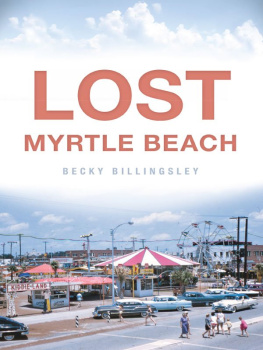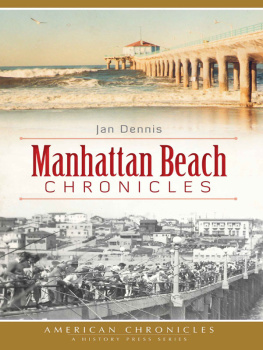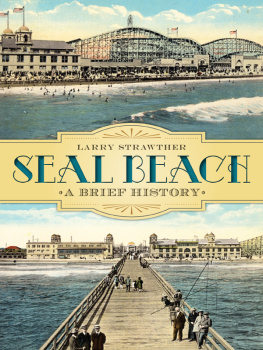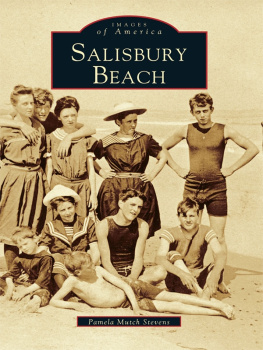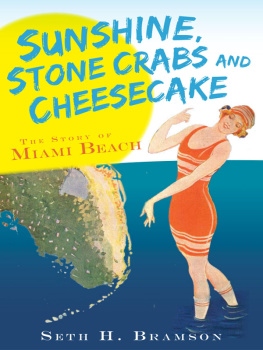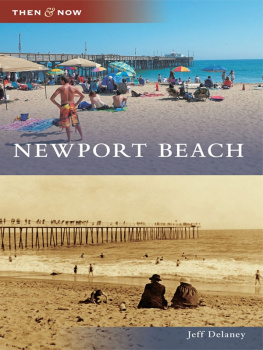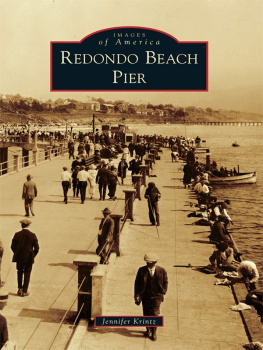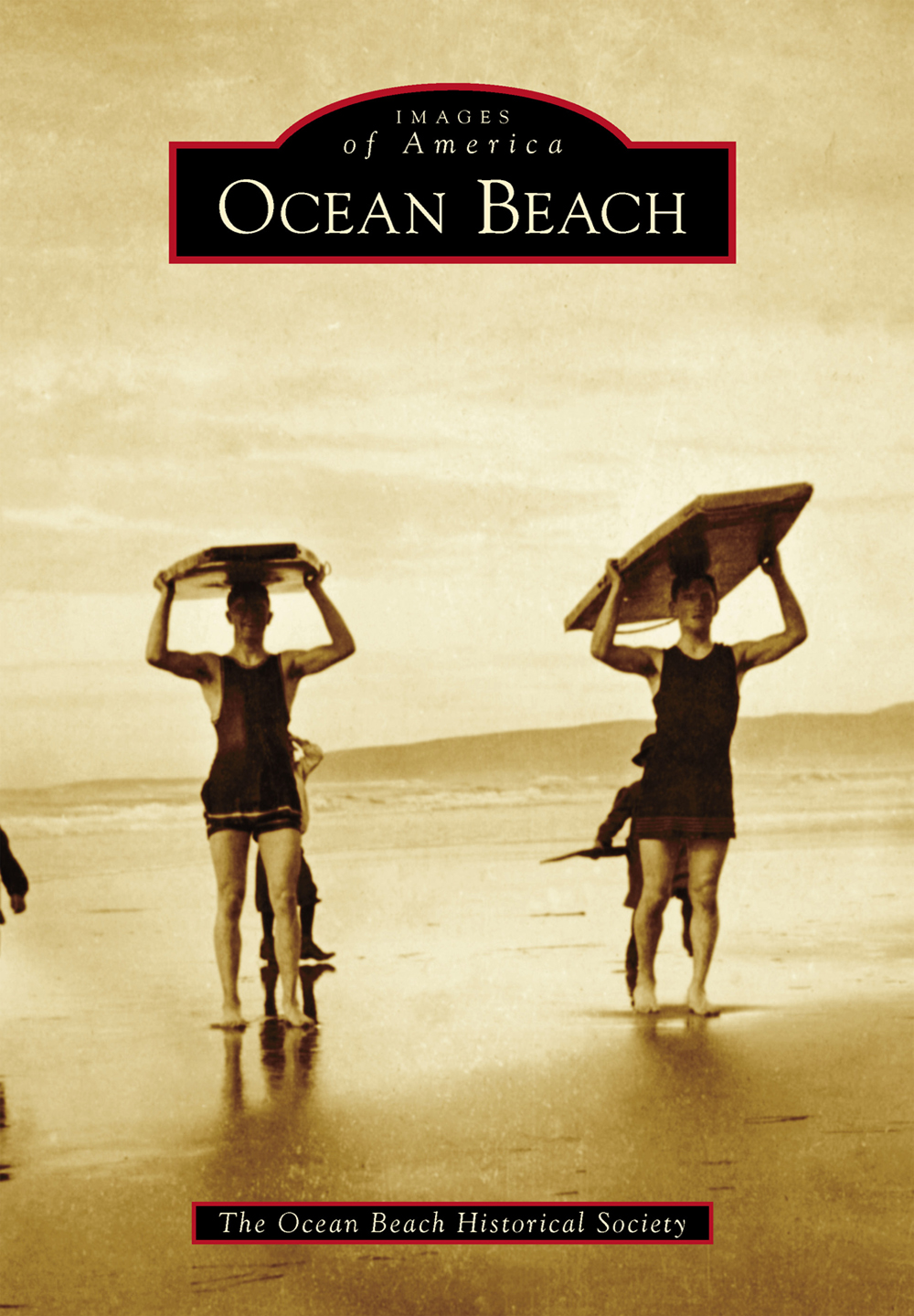
IMAGES
of America
OCEAN BEACH
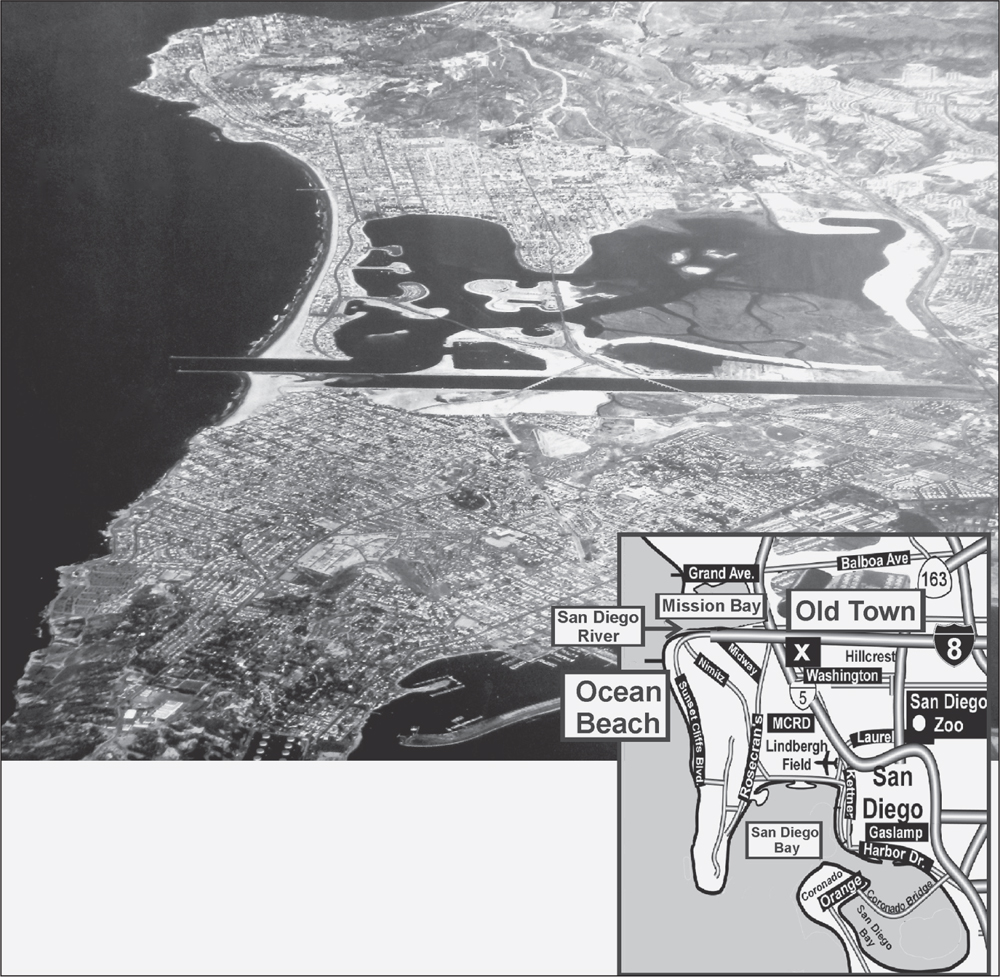
This 1950s photograph, taken before Interstates 5 and 8 were built, shows the proximity of Ocean Beach (south of peninsula) to Mission Bay Park, San Diegos aquatic playground, which was still under development at the time this view was captured. Ocean Beach, bounded by the Pacific Ocean on the west and the San Diego River on the north, is seven miles from downtown San Diego. Old Town, site of the first European settlement in California, lies due east. (Courtesy of the Ocean Beach Historical Society.)
ON THE COVER: Early Ocean Beach surfers return from the sea carrying their boards overhead. In the mid-1920s, surfing definitely was not for weaklings. One not only had to have the strength to get the heavy wooden board to the water, but also to control it once there. In the pre-balsa days (before 1932), boards were made of redwood, cedar, and other heavy woods, and could weigh as much as 100 pounds. (Courtesy of the Ocean Beach Historical Society.)
IMAGES
of America
OCEAN BEACH
The Ocean Beach Historical Society

Copyright 2014 by the Ocean Beach Historical Society
ISBN 978-1-4671-3198-8
Ebook ISBN 9781439646700
Published by Arcadia Publishing
Charleston, South Carolina
Library of Congress Control Number: 2013956286
For all general information, please contact Arcadia Publishing:
Telephone 843-853-2070
Fax 843-853-0044
E-mail
For customer service and orders:
Toll-Free 1-888-313-2665
Visit us on the Internet at www.arcadiapublishing.com
This book is dedicated to Carol Bowers, founder of the Ocean Beach Historical Society, and to the memory of two local legendsBeach Town author Ruth Held (19061996), and historian Ned Titlow (19242011). They inspired us and made preserving history fun!
CONTENTS
ACKNOWLEDGMENTS
This project was a group effort of members of the Ocean Beach Historical Society (OBHS). Jonnie Wilson, the books editor and primary writer, built on earlier work done by Kathy Blavatt, who selected, researched, and scanned most of the images used here. Others who assisted in the publication process include Susan James, who as project manager oversaw production and prepared the final page layout, and Barbara Busch, Jane Gawronski, Stephanie Greenwald, and Dedi Ridenour, who helped with photo selection, caption writing, final revisions, and anything else that was asked of them. Mary Allely, archivist of the Ocean Beach Historical Society, assisted with the location of photographs and other resources, as did volunteers Annie Marsch, Margaret Blue, and Heather Reed. We thank them all.
In addition to the treasure trove of materials available in the OBHS archivesnewspapers, city directories, maps, and moreresources that were particularly helpful during the writing of this book include Beach Town by Ruth Held and Ocean Beach: Continuity and Change in a Beach Community (masters thesis) by James Christopher Carter.
Unless otherwise noted, all images appear courtesy of the Ocean Beach Historical Society. Special thanks go to photographer Steve Rowell, who not only donated photographs from his own collection, but also cheerfully completed special assignments as needed, with Jane Gawronski as his backup. The authors also wish to express their appreciation to Rick Crawford, supervisor of Special Collections at the San Diego Public Library, for reviewing the final draft of this book, and the dozens of people who donated their own historic photographs of Ocean Beach specifically for this project.
INTRODUCTION
It is easy to find Ocean Beach, a neighborhood of San Diego, California. Just travel west on Interstate 8 until it dead-ends at the Pacific Ocean and turn left. Once past the entryway sign, youll find cute little beach cottages, a main street lined with palm trees, the longest concrete municipal fishing pier on the West Coast, rugged sandstone cliffs, tide pools, a surfing and bathing beach, and many happy people going about their day.
Although situated within the boundaries of a major city, Ocean Beach has the look and feel of a small beach town. Its main business district is only three blocks long, many of the stores are locally owned, and people out for a walk just about always bump into someone they know. Part of this small town feeling comes from being somewhat geographically isolated. Ocean Beach is hemmed in by the Pacific Ocean on the west, the San Diego River on the north, and the steep hills of Point Loma on the east. It is an out-of-the-way place that you do not pass through on your way to other parts of town. Arriving in Ocean Beach is intentional (unless you got in the wrong lane on the freeway).
Despite its seeming remoteness, Ocean Beach has long been a favorite spot to visit. The first to walk its beaches were the native Kumeyaay, who traveled there annually as part of their food gathering migration. (This particular beach was prized for its abundance of seafood.) With the arrival of colonizers and settlersthe Spanish in 1769 and the Americans in 1848more people came to know Ocean Beach as a place of beauty and bounty that was ideal for a day trip. By the 1870s, it was a popular picnicking and camping spot for city folk, despite their having to endure a long wagon ride through mud flats to get there. It was close to both Old Town (site of the first European settlement in California in 1769) and New Town (downtown San Diego, founded in 1851).
It was not until the San Diego boom year of 1887 that William Carlson and Frank Higgins subdivided Ocean Beach and began selling lots so people could live, rather than camp, there. This was also the year that Ocean Beach got its name, having earlier been called Mussel Beds. The trend of the era was to develop beaches into seaside resorts, and in Ocean Beach, the streets were even given resort names such as Saratoga, Niagara, and Cape May. Carlson and Higgins took their vision a step furtherthey built a resort-style hotel (a mini Hotel del Coronado) overlooking the sea. Sales were brisk at first, but San Diego suffered an economic downturn in 1888, and building came to a standstill. Banks failed, properties were abandoned, and Ocean Beach went back to being primarily a day-trip destination. It remained sparsely populated until 1909, when D.C. Collier, whose real estate company owned most of northern Ocean Beach, brought in city water, improved roads, put in sidewalks, planted trees, and built a streetcar line to connect the beach with downtown San Diego. Within a year, Ocean Beach had 100 homes, although many of these were built as second homes or rental cottages. Gradually, new dwellings were more likely to be for middle-class year-round residents.
Many of the early businesses catered to tourists, and Ocean Beach became the place to go on weekends. Wonderland, Ocean Beachs amusement park, drew crowds of thousands to the beach during its short life span (19131915), and dance halls and indoor saltwater plunges attracted many others. In the mid-1920s, however, much of the tourism moved to Mission Beach, which by then had its own amusement park and was also connected to downtown by streetcar. Ocean Beach began the shift from a seasonal tourist town to a family-oriented community, and the focus changed to providing goods and services for residents, not visitors. A strong community spirit began to evolve, one that has survived to the present day.
Next page



